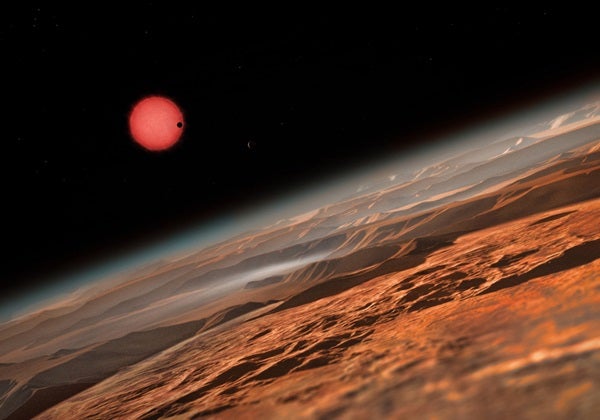A new robotic telescope has had first light at the European Southern Observatory’s (ESO) La Silla Observatory in Chile. TRAnsiting Planets and PlanetesImals Small Telescope (TRAPPIST) is devoted to the study of planetary systems through two approaches: the detection and characterization of planets located outside the solar system (exoplanets), and the study of comets orbiting around the Sun. The 24-inch (60 centimeters) telescope is operated from a control room in Liege, Belgium, 7,450 miles (12,000 kilometers) away.
“The two themes of the TRAPPIST project are important parts of an emerging interdisciplinary field of research — astrobiology — that aims at studying the origin and distribution of life in the universe,” said Michael Gillon, who is in charge of the exoplanet studies.
“Terrestrial planets similar to our Earth are obvious targets for the search for life outside the solar system, while comets are suspected to have played an important role in the appearance and development of life on our planet,” said his colleague Emmanuel Jehin, who leads the cometary part of the project.
TRAPPIST will detect and characterize exoplanets by making high- precision measurements of “brightness dips” that might possibly be caused by exoplanet transits. During such a transit, the observed brightness of the star decreases slightly because the planet blocks a part of the starlight. The larger the planet, the more of the light is blocked and the more the brightness of the star will decrease.
The astronomers behind the TRAPPIST initiative will work closely with the teams using HARPS on the 3.6-meter telescope and CORALIE attached to the Swiss 1.2-meter Leonhard Euler Telescope, both at La Silla. TRAPPIST is a collaboration between the University of Liege and the Geneva Observatory in Switzerland. The telescope is installed in the building that housed the old Swiss T70 telescope. Thanks to this collaboration, the whole project is on a fast track: It took only 2 years between taking the decision to build and first light.
TRAPPIST will also be used for the study of southern comets. To this aim, the telescope is equipped with special large, high- quality cometary filters, allowing astronomers to study regularly and in detail the ejection of several types of molecules by comets during their journey around the Sun.
“With dozens of comets observed each year, this will provide us with a unique dataset, bringing important information about their nature,” said Jehin.
TRAPPIST is a lightweight 0.6-meter robotic telescope, fully automated and moving precisely across the sky at a high speed. The observing program is prepared in advance and the telescope can perform a full night of observations unattended. A meteorological station monitors the weather continuously and decides to close the dome if necessary.











